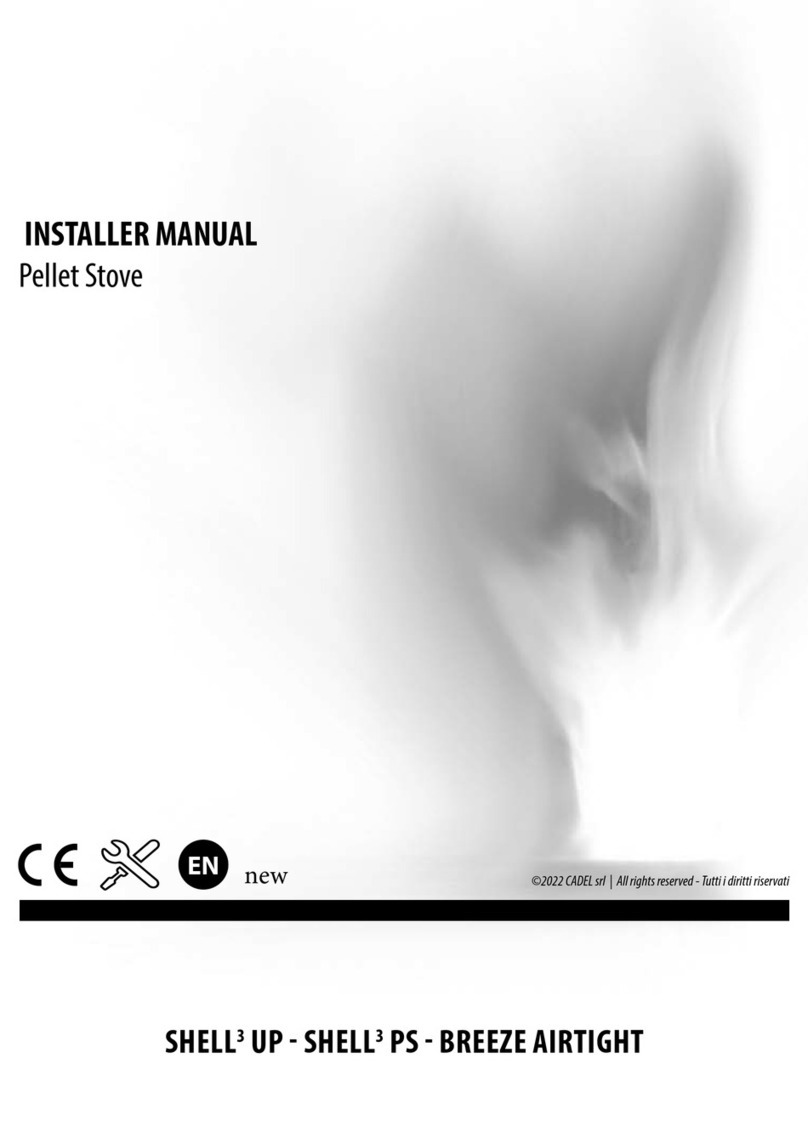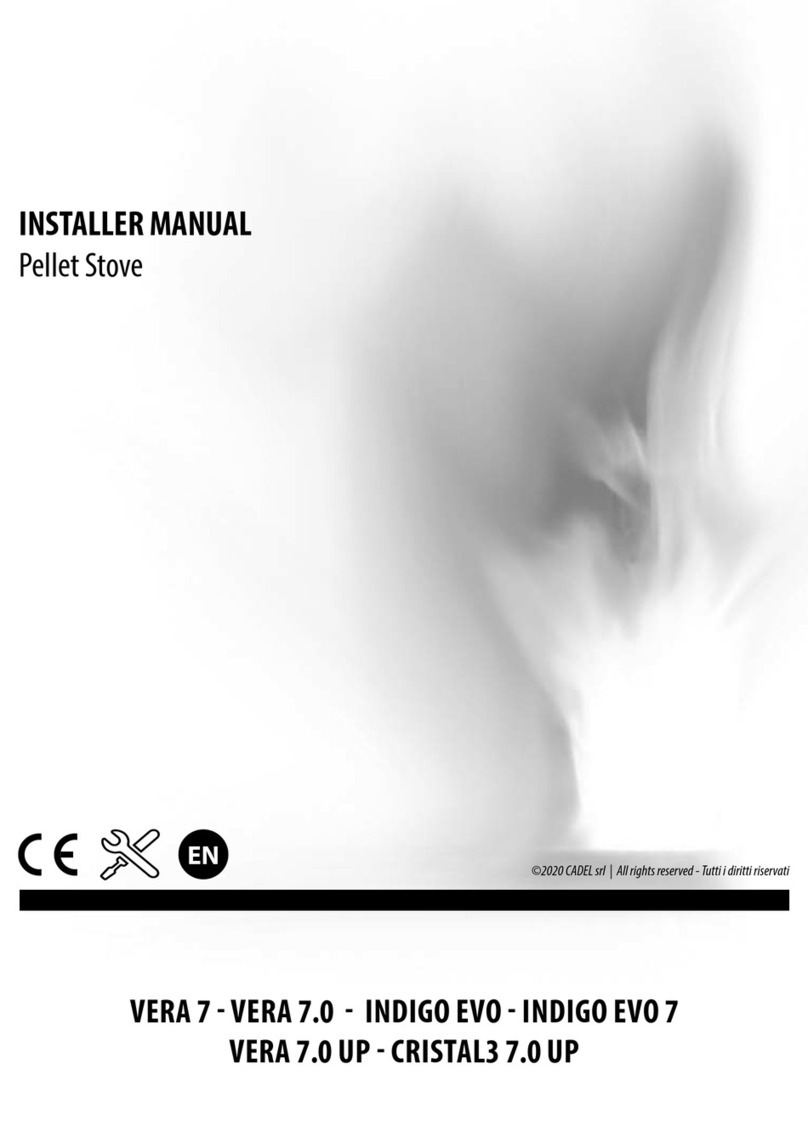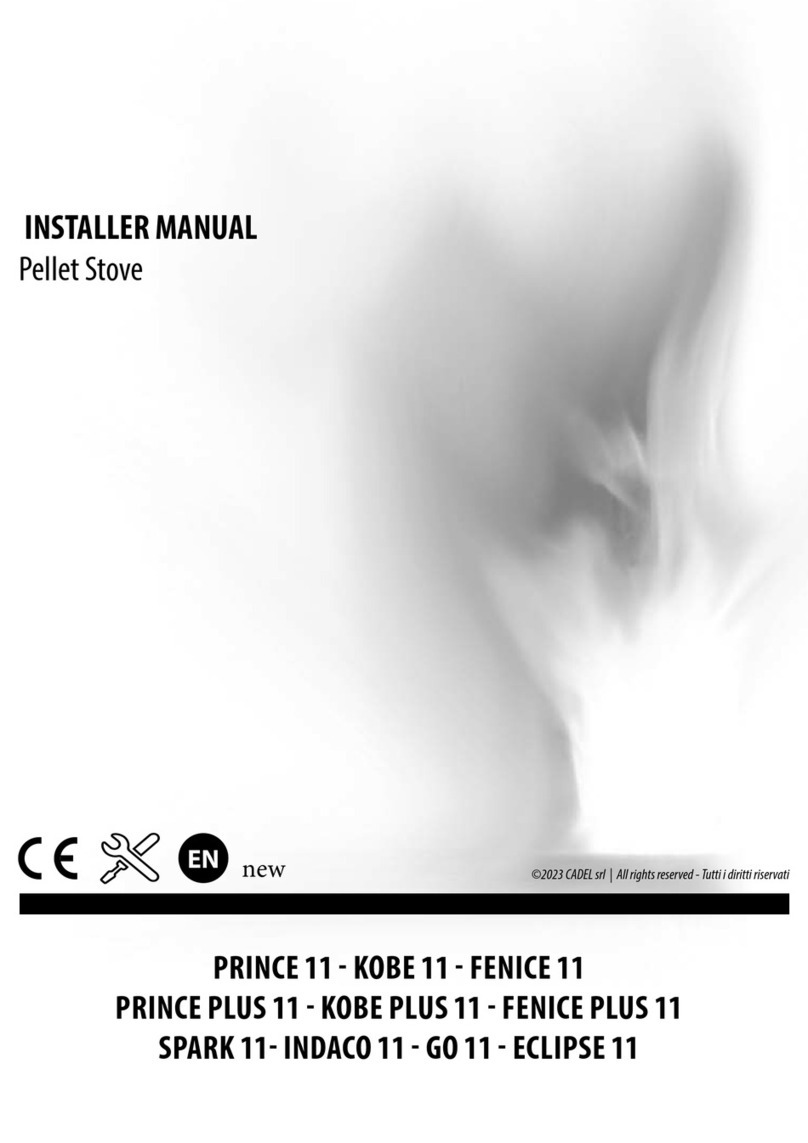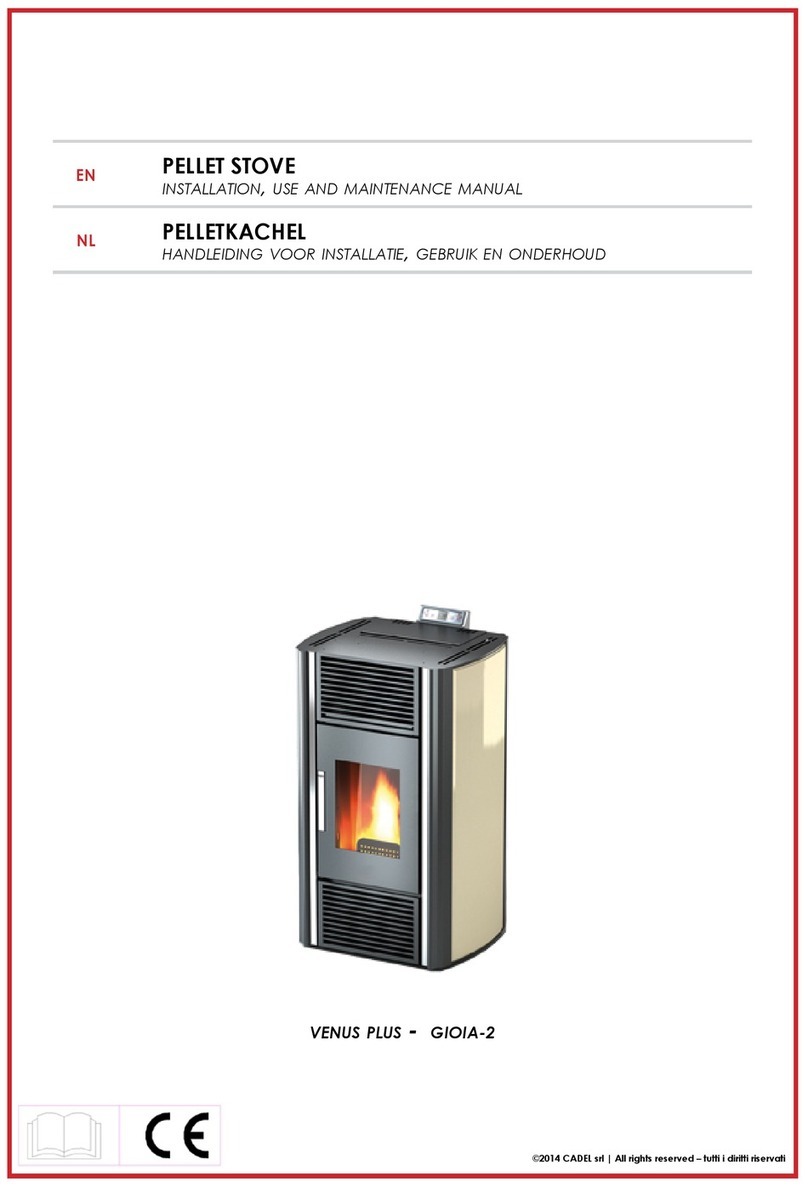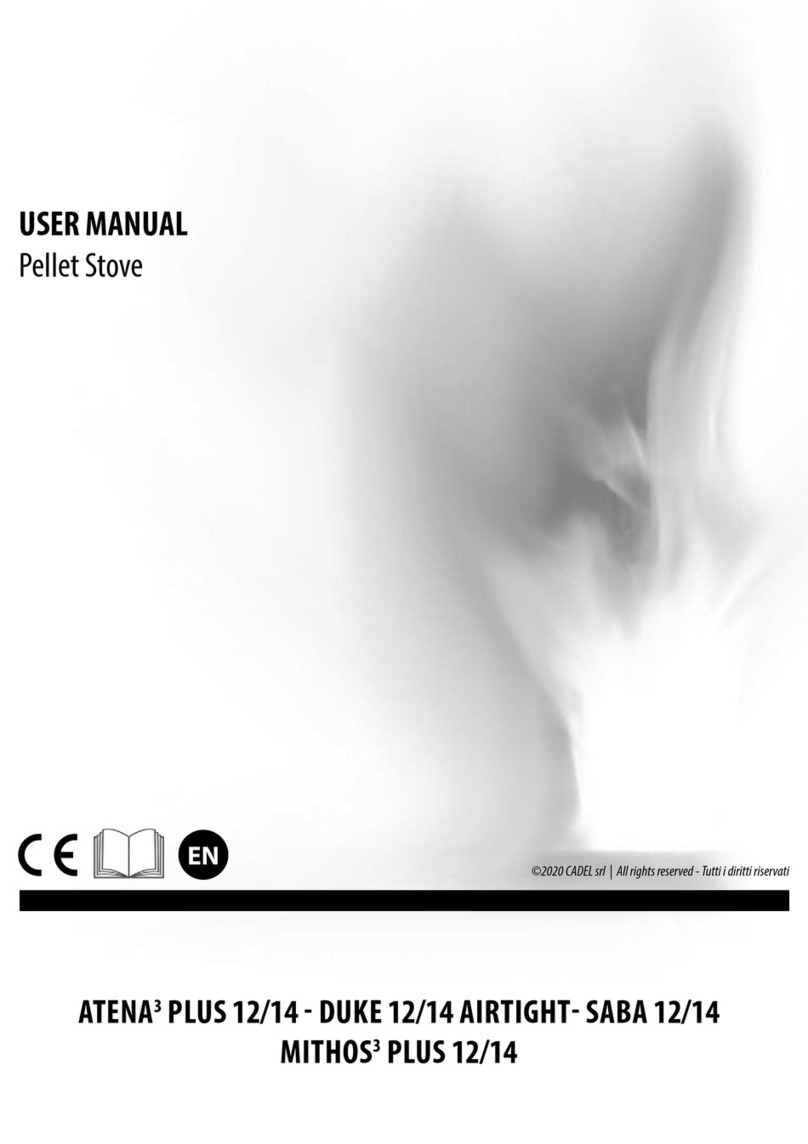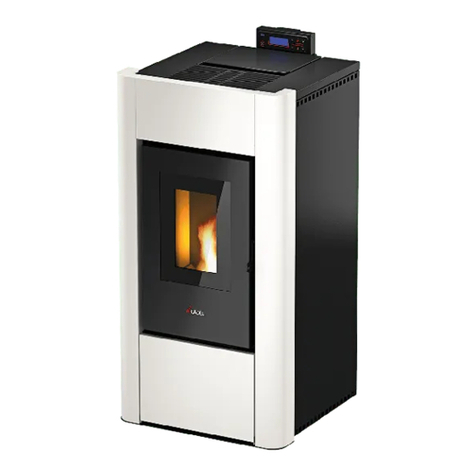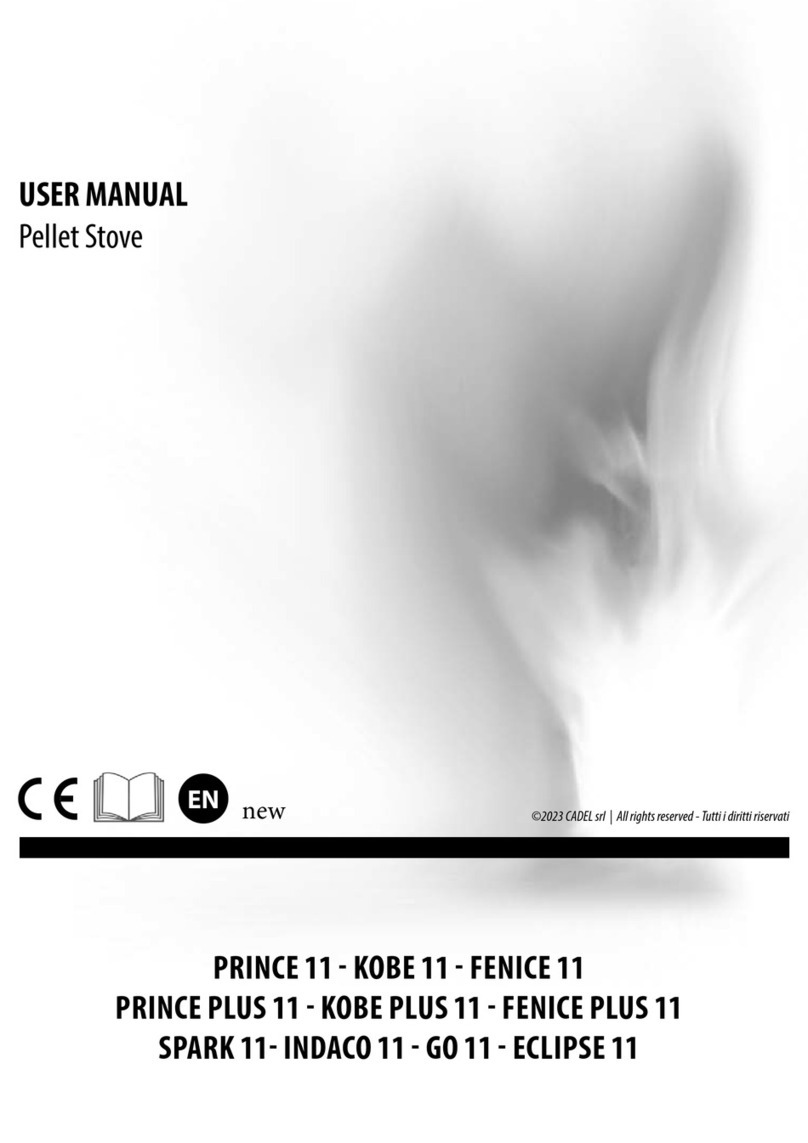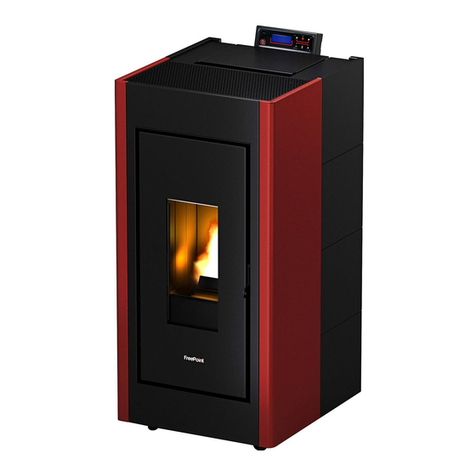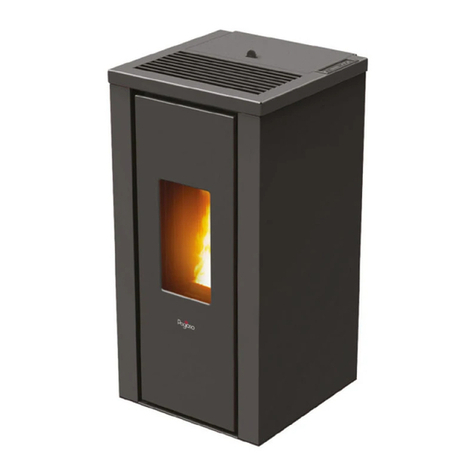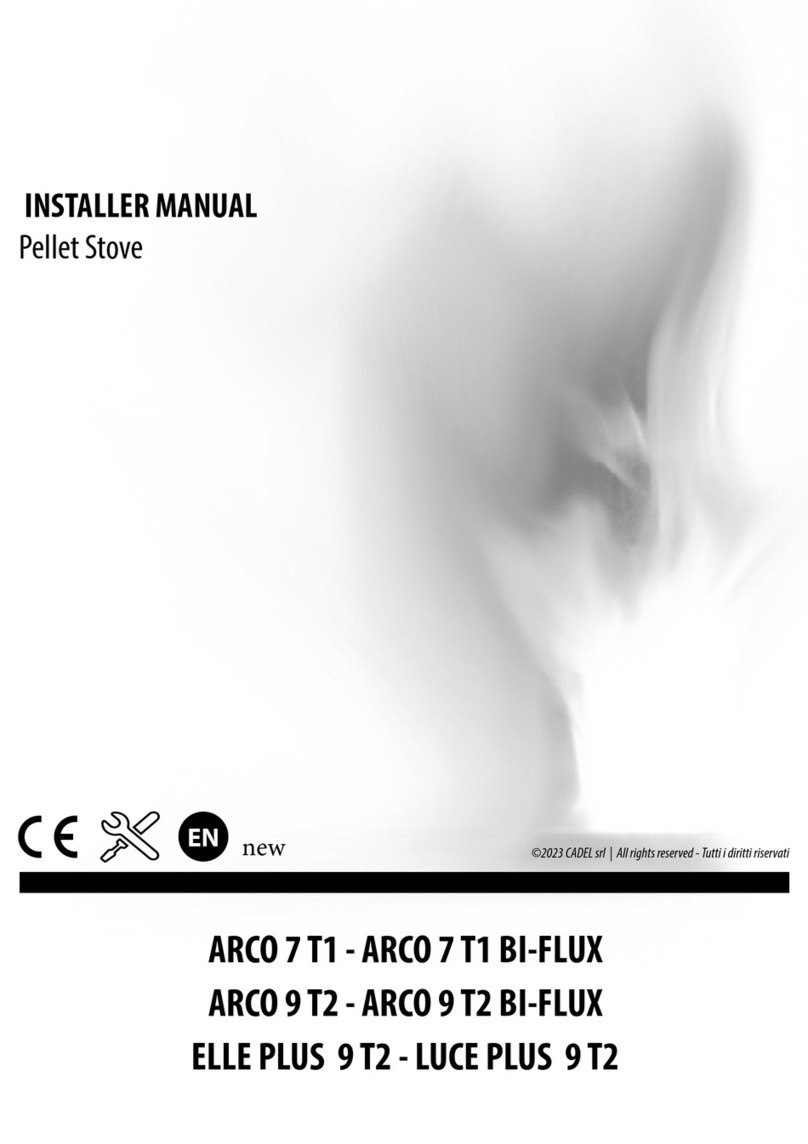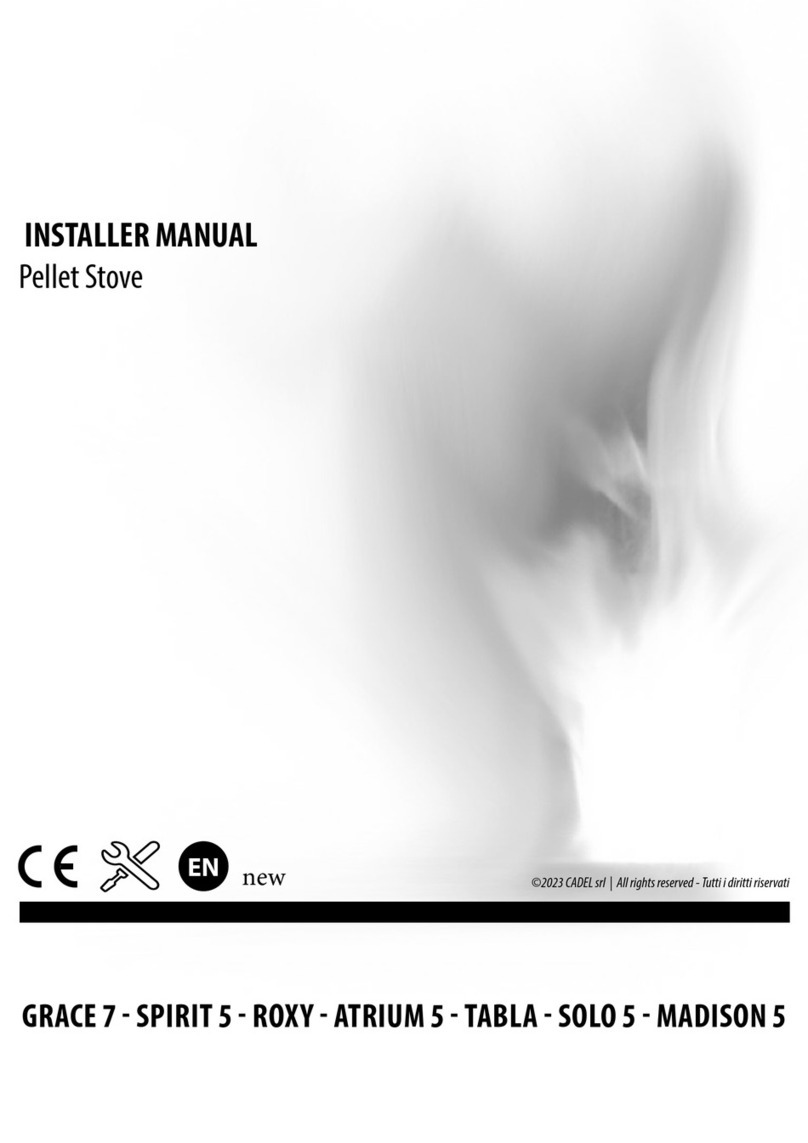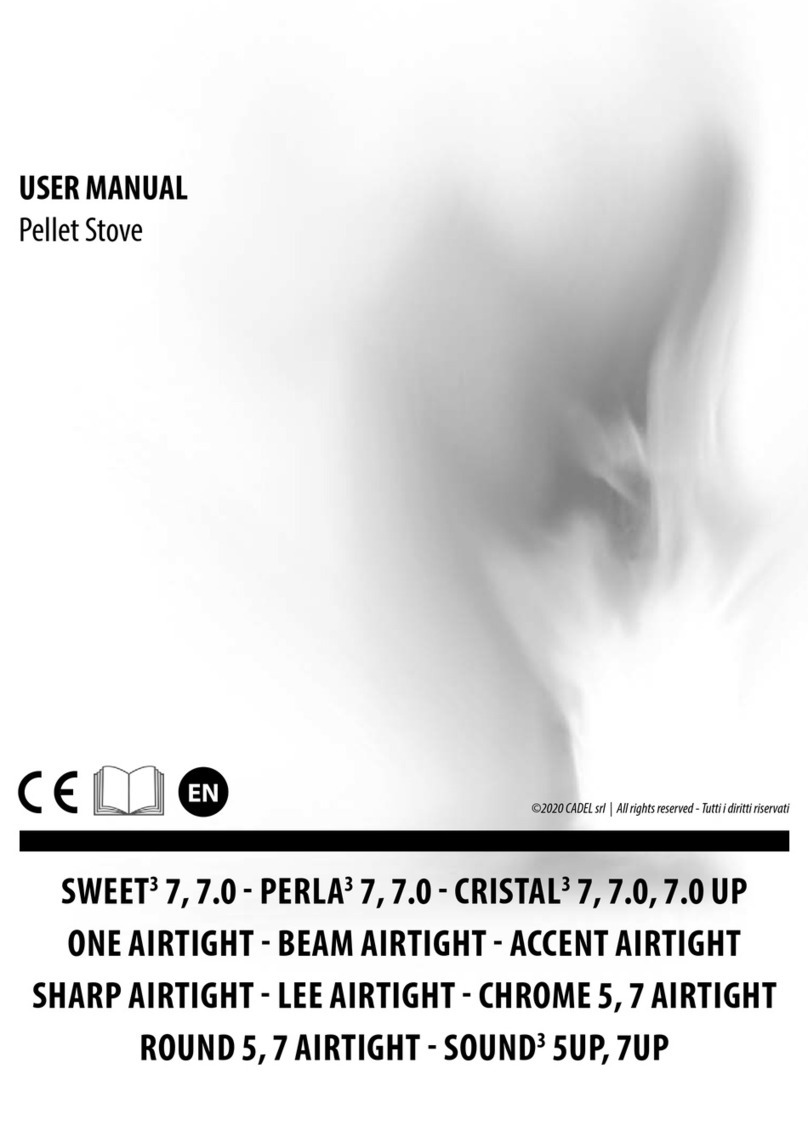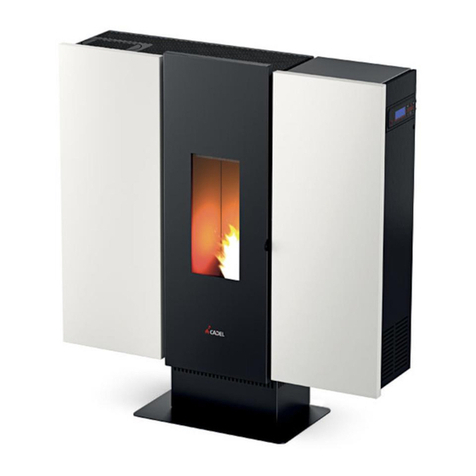
2WALL - SMALL - STYLE
EN
Summary
1 MANUAL SIMBOLOGY ......................................... 3
2 DEAR CUSTOMER ................................................. 3
3 CAUTIONS ............................................................ 3
4 SAFETY REQUIREMENTS ........................................ 4
5 WARRANTY CONDITIONS .................................... 5
6 SPARE PARTS......................................................... 6
7
WARNINGS FOR THE CORRECT DISPOSAL OF THE PRODUCT ....
6
8 PACKAGING AND HANDLING............................ 6
8.1 PACKAGING ....................................................6
8.2 STOVE HANDLING............................................ 6
9 CHIMNEY FLUE ..................................................... 6
9.1 INTRODUCTION ................................................6
9.2 CHIMNEY FLUE..................................................7
9.3 TECHNICAL FEATURES...................................... 7
9.4 HEIGHT-DEPRESSION ........................................ 8
9.5 MAINTENANCE.................................................8
9.6 CHIMNEY POT................................................... 8
9.7 CHIMNEY COMPONENTS ................................ 9
9.8 EXTERNAL AIR INLET.......................................... 9
9.9 COMBUSTION AIR DRAWN DIRECTLY FROM
OUTSIDE.................................................................. 10
9.10 CHIMNEY FLUE CONNECTION ..................... 11
9.11 EXAMPLES OF CORRECT INSTALLATION...... 12
10 FUEL..................................................................... 13
10.1 FUEL................................................................ 13
11 INSTALLATION .................................................... 14
11.1 INTRODUCTION .............................................14
11.2 OVERALL DIMENSIONS ................................. 14
11.3 GENERAL INSTALLATION............................... 16
11.4
WALL MOUNTING (WALL-SMALL MODELS)....
16
11.5 SAFETY FIXING ...............................................18
11.6
PANELS ASSEMBLY (WALL - SMALL MODEL)
.... 18
11.7 PANELS ASSEMBLY (STYLE MODEL).............. 19
11.8 ELECTRIC CONNECTION ............................ 19
11.9
CONNECTION TO THE EXTERNAL THERMOSTAT....
20
11.10 VENTILATION ................................................20
11.11 PARTIAL DUCTING SYSTEM.......................... 20
11.12 FUNNEL CANALIZATION MOUNTING ......... 20
12 USE ...................................................................... 21
12.1 INTRODUCTION .............................................21
12.2 CONTROL PANEL .......................................... 21
12.3 USER MENU ....................................................22
12.4 START UP ........................................................ 23
12.5 STOVE ADJUSTMENT ..................................... 23
12.6 FAILED IGNITION............................................23
12.7 POWER FAILURE ............................................24
12.8 TEMPERATURE SETTING ................................. 24
12.9 FUME TEMPERATURE...................................... 24
12.10 SWITCHING OFF........................................... 24
12.11 CLOCK SETTING...........................................24
12.12 DAILY PROGRAMMING .............................. 24
12.13 WEEKEND PROGRAMMING........................ 24
12.14 WEEKLY PROGRAMMING ........................... 24
12.15 PELLET SUPPLY ..............................................25
12.16 REMOTE CONTROL...................................... 25
13 SAFETY SYSTEM................................................... 26
13.1 INTRODUCTION .............................................26
13.2 "BLACK OUT" ALARM .................................... 26
13.3 "EXHAUST PROBE" ALARM ............................ 26
13.4 "HOT EXHAUST" ALARM................................. 26
13.5 "FAN FAILURE" ALARM .................................. 26
13.6 "FAILED IGNITION" ALARM............................ 26
13.7 "NO PELLET" ALARM ...................................... 26
13.8 "THERMAL SAFETY" ALARM ........................... 26
13.9 "FAILURE DEPRESS" ALARM ........................... 27
14 MAINTEINANCE.................................................. 27
14.1 INTRODUCTION .............................................27
14.2
BURNING POT AND ASH TRAY CLEANING
..... 27
14.3 HOPPER AND AUGER CLEANING................ 28
14.4 FUME CHAMBER CLEANING ........................ 28
14.5 FUME CONDUIT CLEANING.......................... 29
14.6 FUME FAN CLEANING................................... 29
14.7 ROOM FAN CLEANING................................. 30
14.8 FUME PIPES ANNUAL CLEANING.................. 30
14.9 GENERAL CLEANING.................................... 30
14.10 CLEANING OF PAINTED METAL PANELS .... 30
14.11
CLEANING OF CERAMIC AND STONE PANELS
... 31
14.12 GASKET REPLACEMENT ............................... 31
14.13 GLASS CLEANING........................................ 31
15 IN CASE OF ANOMALY...................................... 31
15.1 ALARMS ......................................................... 31
15.2 PROBLEM SOLVING ...................................... 34
16 TECHNICAL DATAS............................................. 36
16.1 REPAIR INFORMATION .................................. 36
16.2 FEATURES .......................................................37
